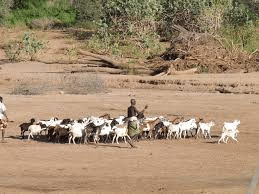
The vast, semi-arid regions of Kenya, including the counties of Samburu, Laikipia, and Marsabit, have long been the domain of pastoral communities, whose way of life is intrinsically tied to the rhythms of the land and the well-being of their livestock. For generations, these resilient people have navigated the challenges of a harsh environment, adapting their practices to the ever-changing climate and ensuring the survival of their communities.
However, in recent years, the relentless march of climate change has posed an unprecedented threat to the pastoralist livelihoods that have sustained these communities for centuries. Prolonged droughts, erratic rainfall patterns, and the loss of valuable grazing lands have placed immense strain on the delicate balance that has long defined pastoral life in Kenya’s semi-arid regions.
In the face of these daunting challenges, a new generation of pastoralists is stepping forward, determined to not only safeguard their traditional way of life but to also carve out a more sustainable and resilient path forward. Through a combination of innovative approaches, strategic partnerships, and a steadfast commitment to adaptation, these young leaders are spearheading a transformative shift in the way pastoralism is practiced and understood.

One of the key focus areas for this new generation of pastoralists is the diversification of livelihood options. Recognizing the inherent vulnerabilities of a livestock-centric economy, they are exploring alternative income streams, such as the cultivation of drought-resistant crops, the development of eco-tourism ventures, and the tapping into renewable energy markets. By broadening their economic horizons, these young pastoralists are building a more resilient and adaptable future for their communities.
Alongside these economic diversification efforts, the youth in Samburu, Laikipia, and Marsabit are also championing the adoption of sustainable livestock management practices. Through the implementation of holistic grazing techniques, the strategic use of watering points, and the introduction of climate-resilient livestock breeds, they are working to ensure the long-term viability of their pastoral systems.
These innovative approaches are not only benefiting the pastoralist communities themselves but are also contributing to the broader conservation efforts in these semi-arid regions. By aligning their practices with the principles of environmental stewardship, the young pastoralists are playing a crucial role in preserving the fragile ecosystems that have long been their home.
Furthermore, the youth in these regions are actively engaged in the policy arena, advocating for greater recognition and support for pastoralist livelihoods. They are working closely with local and national government authorities, as well as with international development organizations, to ensure that the unique needs and challenges of pastoral communities are addressed in the formulation of climate change adaptation and disaster risk reduction strategies.

One such example is the Samburu Pastoralist Development Organization (SPDO), a youth-led initiative that has been at the forefront of these policy-level engagements. Through their advocacy efforts, the SPDO has secured increased investment in the development of early warning systems, the establishment of community-based disaster management structures, and the provision of emergency livestock feed during times of drought.
These youth-led initiatives are not only transforming the landscape of pastoralism in Kenya’s semi-arid regions but are also serving as inspiring models for other communities facing the impacts of climate change. By sharing their experiences, collaborating with partners, and amplifying their voices on the global stage, these young pastoralists are contributing to a broader movement of sustainable development and climate resilience.
As the world grapples with the mounting challenges of a changing climate, the youth in Samburu, Laikipia, and Marsabit stand as beacons of hope, demonstrating that with innovation, determination, and a deep connection to the land, it is possible to not only adapt but to thrive in the face of adversity. Their stories are a testament to the power of community-driven solutions and the transformative potential of the next generation of pastoralist leaders.




